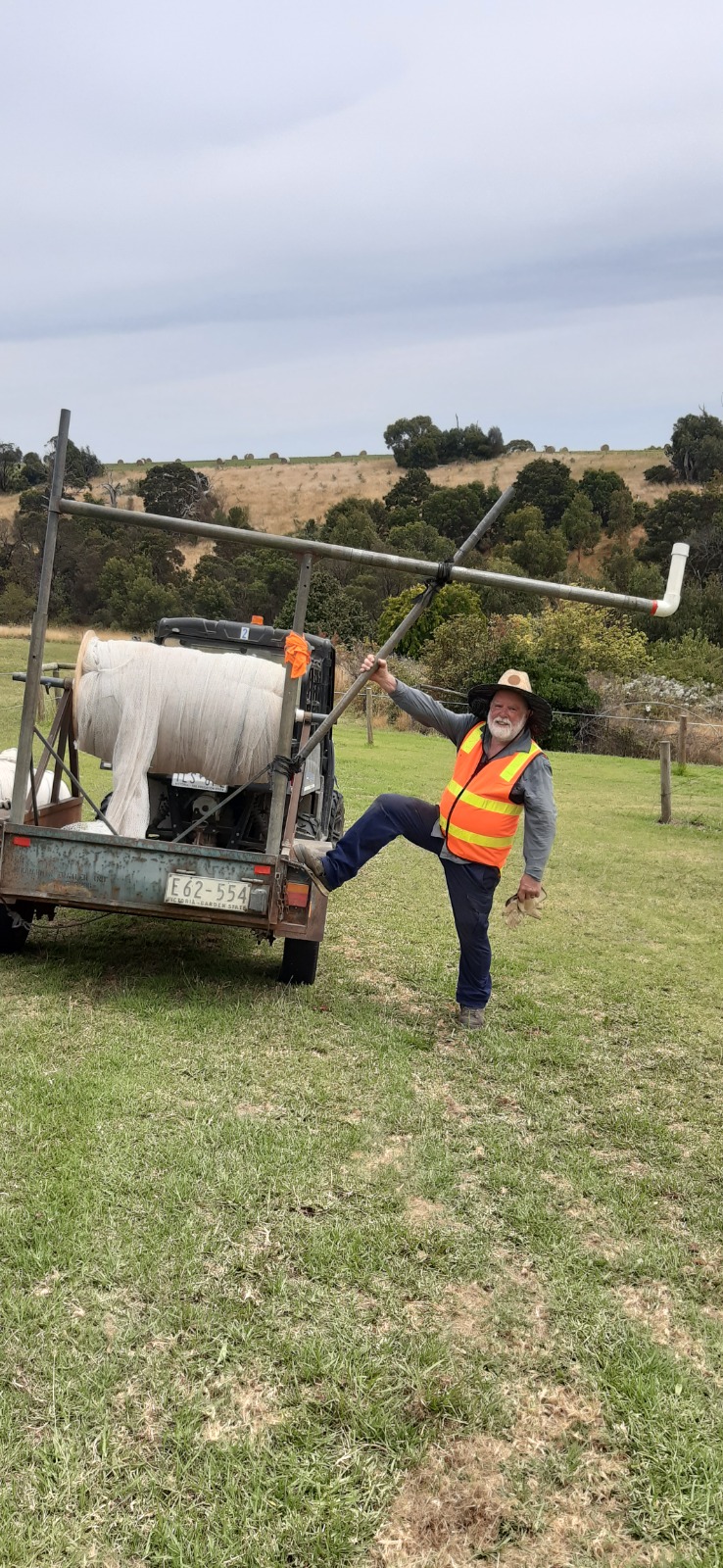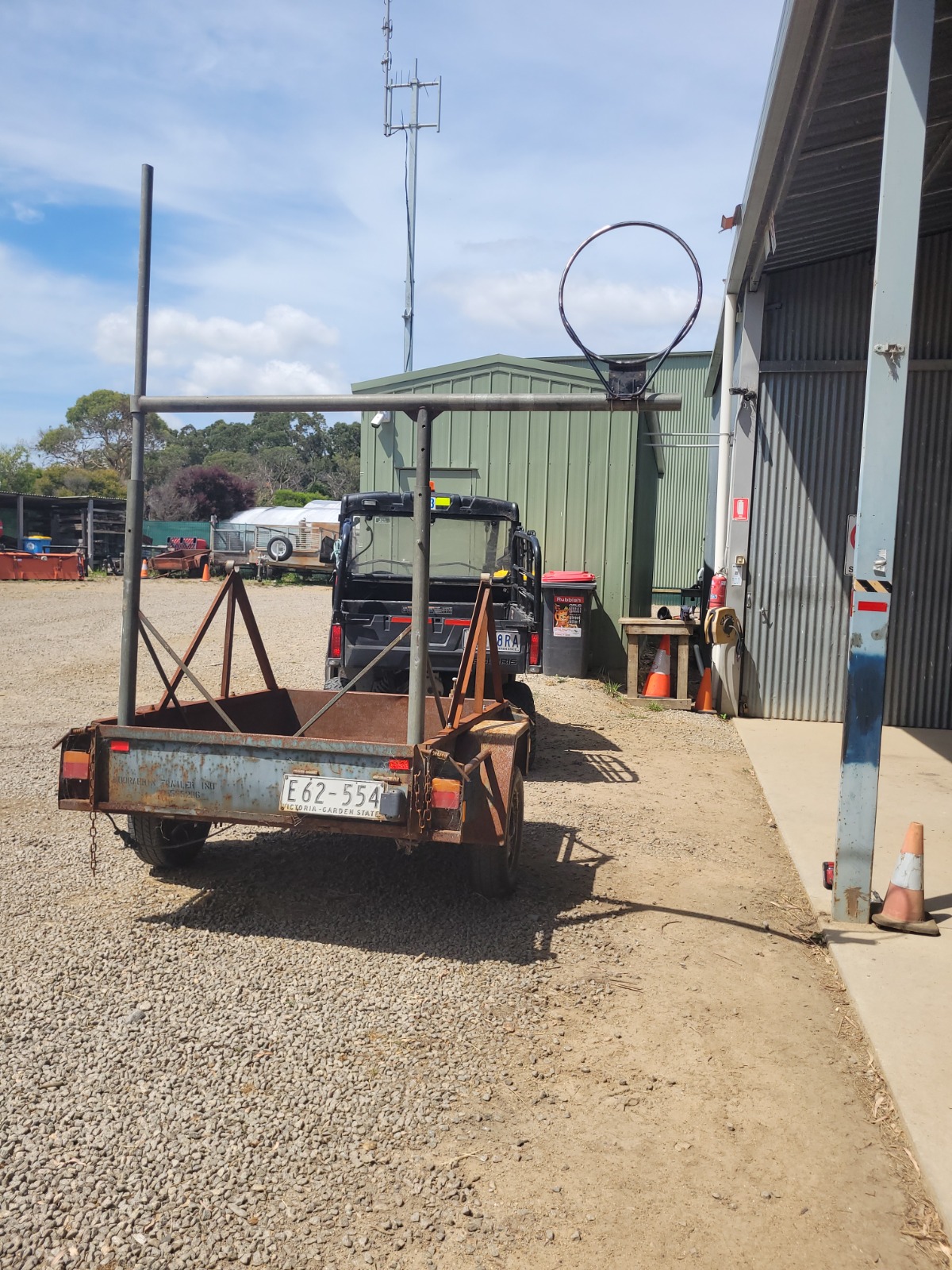The Briars Vineyard Volunteers Journal of Events
(Compiled by David Wood)
A number of FAWG members have 'volunteered' to help maintain a vineyard owned by Mornington Peninsula Shire Council, located at The Briars historic property in Mount Martha. There are approximately 1100 cabernet sauvignon vines (on about 1 acre) which were costing the Council money to maintain. The timeline below sets out the progress with the vines over the last few years.
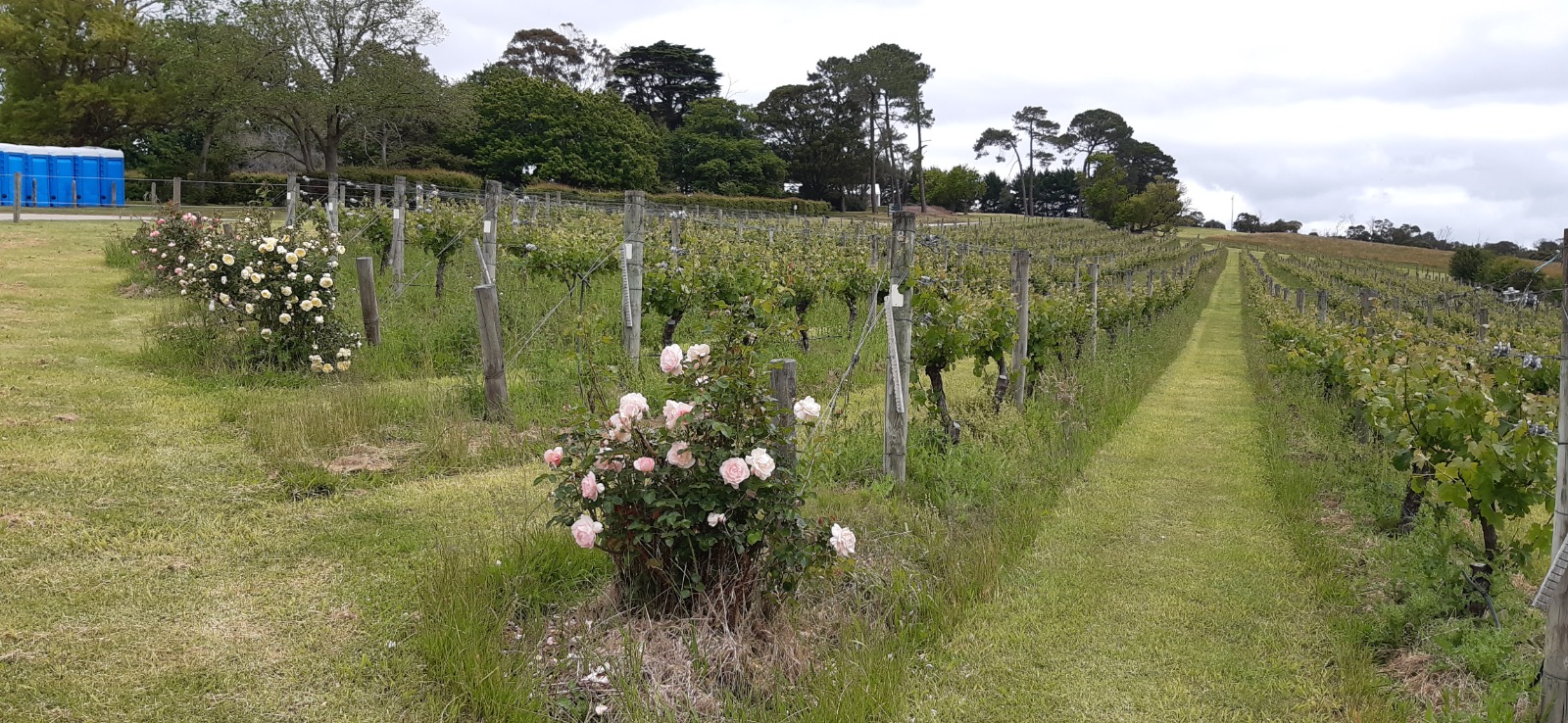
Vintage 2024
- Vintage 2024 ended up a complete disaster.
- We were unable to keep the vines clear of powdery mildew, although we tried to keep the canopy as open as possible and put in a special effort to eradicate the weeds under the vines..
- A the last pray application it became obvious that the crop was to far gone to get a viable harvest.
- All we can do is hope that next year we can improve on the vine maintenance and perhaps introduce some new spray(s) into the spray regime
Vintage 2023
- Coming up to the end of the calendar year, we have had a reasonable season so far.
- The Briars have purchased a new spray unit which we are able to use in the vineyard
- We have modified the netting boom with the addition of a 'basketball hoop' to make the netting installation easier
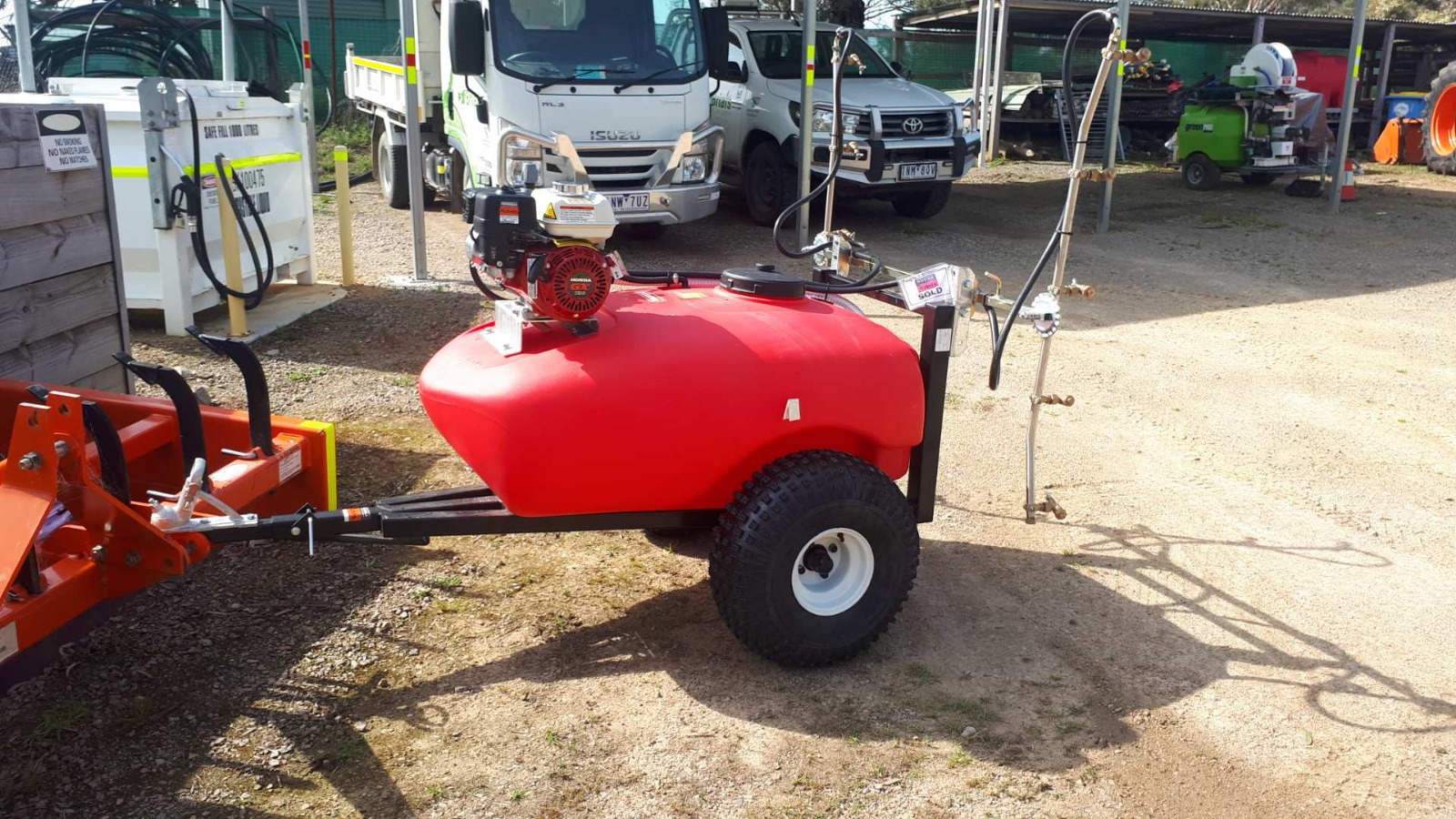
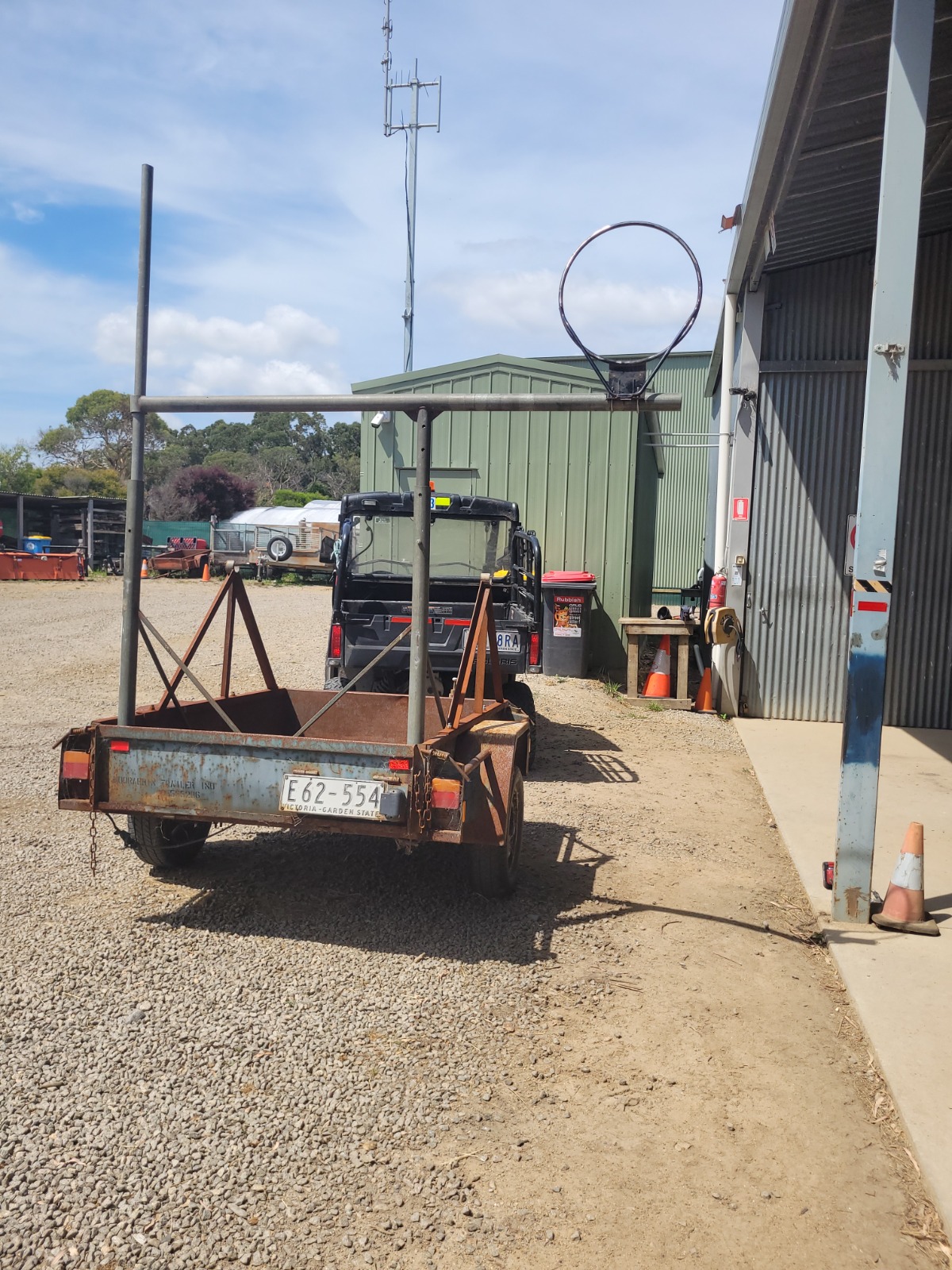
Vintage 2022
- This year’s crop was down on previous years due to our inability to access the vineyard at critical times, such as while the canes were growing and during flower set. Consequently we could not get the required air circulation and anti-fungal spray penetration to reduce the attack for downy and powdery mildew. A high proportion of the delicate flowers were destroyed and later on a lot of the grapes were affected.
- We only harvested about 800-900 kg of grapes this year.
Vintage 2021
- We had a second lockdown in Victoria and were excluded from the Briars vineyard again, starting in July.
- We were due to do a lime sulphur spray about 6 weeks after pruning was finished, which should have been mid-August. This spray may have been critical, given the fungal disease that we encountered during last vintage. However, there is nothing that we can do, as our hands are tied and the deadline was missed.
- During lockdown alternatives to using cable ties in the vineyard were investigated, with ‘rubberties’ being considered a viable alternative, as they can be re-used over 3 to five years according to the distributor. This tie could reduce the amount of ‘micro-plastic’ that we are producing in the vineyard
UPDATE May 2020
- Six weeks after the lockout at the Briars, the Vineyard Volunteers were allowed back in, subject to maximum numbers of people and social distancing requirements.
- The grapes were diseased with what looked like Botrytis fungal infection, however some grapes appeared to be salvageable and a harvest was achieved by some volunteers.
- The quality of the resulting wine is yet to be determined. Fruit obviously very ripe, grape juice much deeper colour than previous seasons, 26.5 Brix (15% a/v), pH approx. 3.5. Juice tasted OK
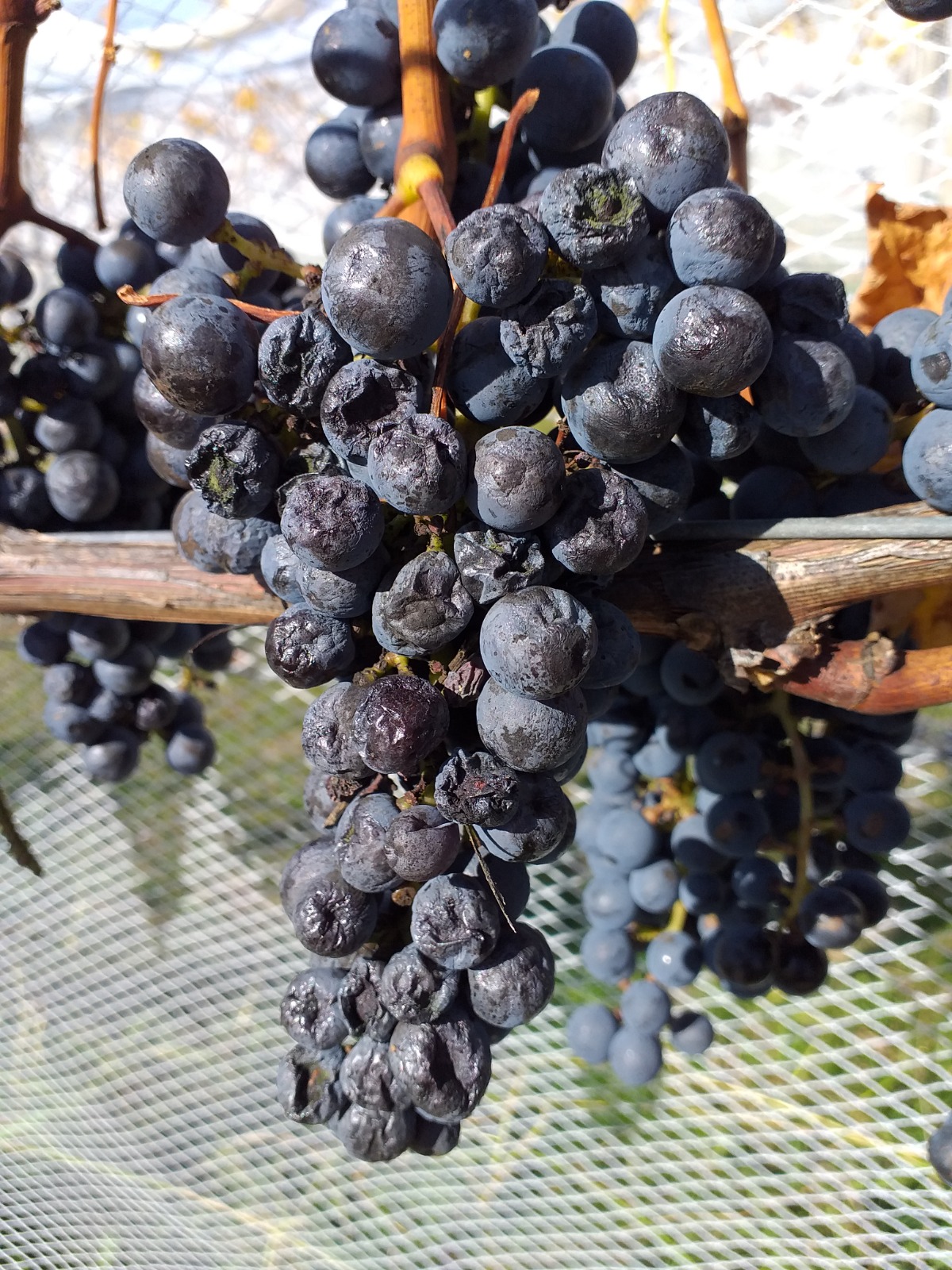
- We've all got our fingers crossed that it turns out OK
March 2020
- DISASTER HAS STRUCK – vineyard volunteers have been locked-out of the Briars property due to COVID-19 isolation requirements.
- We had just determined that the grapes could be harvested. Sugar level at 23 Brix and pH at 3.30. We were planning to start harvest on 1 April but were beaten to the punch by a message received from the Briars on 28 March advising of the lock-out.
- · We’ll see how long the exclusion lasts but looks like we will not be able to access the grapes whilst they are still viable to make ‘normal’ wine from. Might be able to salvage some raisined grapes to make some sort of beverage perhaps later in the season as lost as grapes not spoiled by fungal infection?????
April 2019
- Another great year this year.
- Harvest was pretty much equal to our best year, with 263 boxes filled (estimate 3.5 tonne, plus)
- We implemented a net deployment system of our own design., utilising the old spray boom and a cradle for the net rolls that Pierre and David fabricated, saving around $600 per season to deploy the nets. Next, we then developed a retrieval system using the same equipment with great success, saving the shire another $600 plus per year.
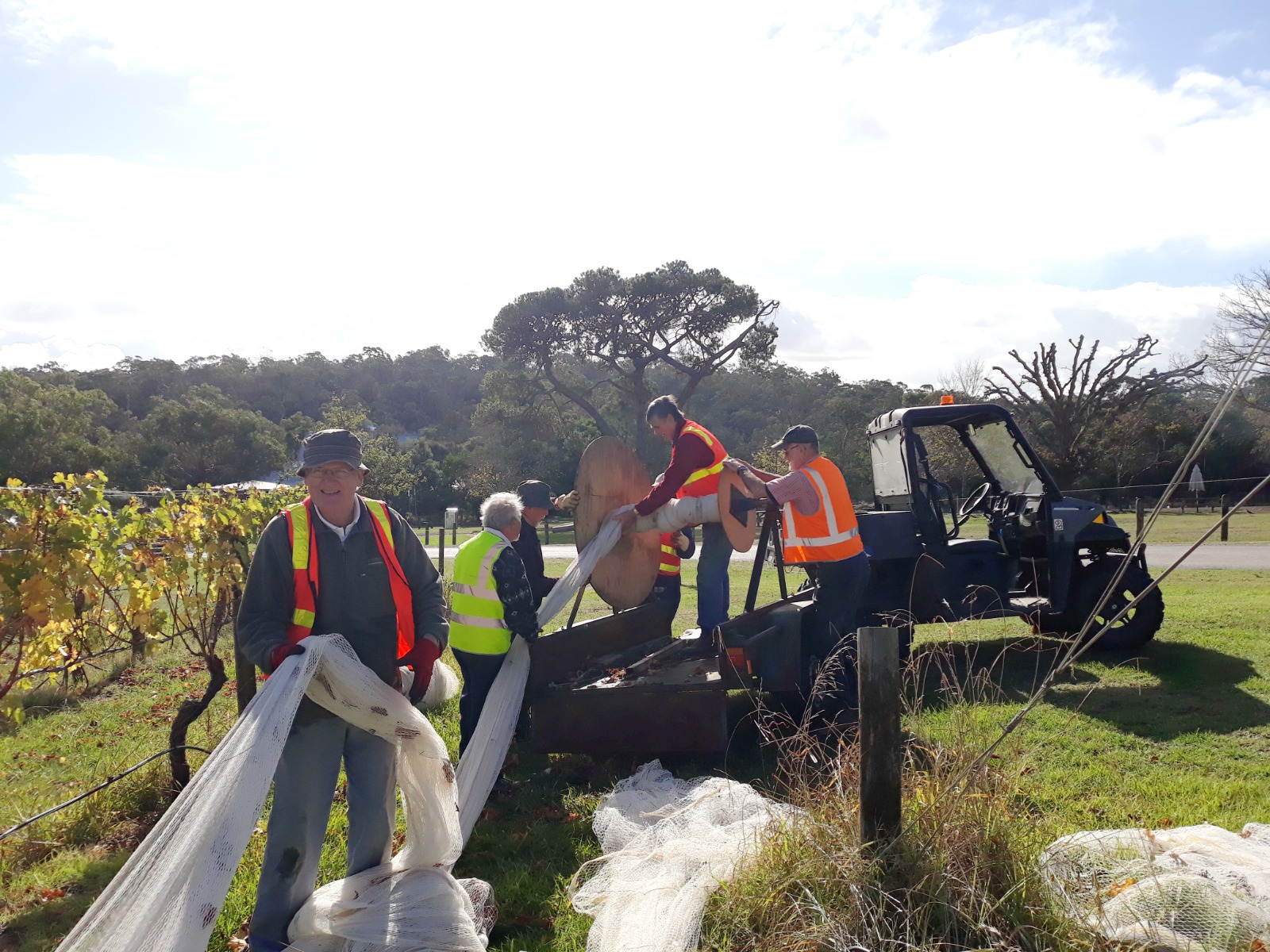
- Peter A was awarded the ‘Golden Band-aid’ award for snipping himself. Two years in a row Peter – are going for the ‘hattrick’ next year?
- Our numbers are fluctuating year by year, but we have prospective new members. (We currently have 16 active members to share the tasks).
- The vineyard was inspected by the Department of Agriculture and pronounced to be phylloxera free. The DoA commented on our good vineyard management practices.
September 2018
- This year was a near disaster, as the vines were attacked by downy mildew and vine leaf blister mite.
- The downy mildew wiped out just over 50 percent of the crop as it took hold just after flowering had commenced.
- We harvested about 1,700kg compared to 4,000 last year. The fruit also contained the shriveled remains of the flowers and immature grapes that it killed.
- So not sure how this year’s vintage will turn out
- A ‘barrel sample entered in the FAWG wineshow scored 14 out of 20, with the description, as per judging criteria
Appearance – deep purple red (3/3 points)
Bouquet – Dark berry, black currant, slightly musty (4.5/7 points)
Palate Sweet fruit, quite ripe? Slight confectionary character (6.5/10 points)
- This year saw the most unfortunate passing of one of our vineyard volunteers, Steve Yorke, from cancer. We held a memorial bottling of Steve and Linda’s wine this month. It has been labeled with Steve’s photo on the label a tribute to his efforts in establishing our group and his ongoing support as a volunteer. Vale Steve Yorke.
April 2017
- Harvest came later this year, as it did with many vineyards.
- Luckily, we had a great crew of volunteers who picked tirelessly
- We harvested a bumper crop - around 4 tonnes worth of grapes.
- This equated to more than 260 boxes
- This posed difficulties accommodating the amount of wine produced!
- This year I produced a 'wild yeast' ferment. It fermented through to dryness, seemed to produce a reasonable wine. Only time will tell what the end product will taste like?
March 2016
- Harvest occurred earlier this year (Friday 11 march - sugars 24.8 Brix,
pH around 3.5)
- We didn't manage to get the nets on before the birds noticed that the grapes were ripening sooner than expected, so we lost a significant portion of the crop and only harvested about 2 tonne this year
- There was evidence of the disease in the crop still with stunted or shortened growth on some vines resulting in smaller bunches of grapes.
- We will now press off the wine and hope for the best!
December 2015
- Vintage 2015 went well - the crop ripened slowly, and we had been waiting anxiously in case it rained before we could pick at the required ripeness/sugar level. All went well and again we harvested just under 3 tonne of grapes. Had to fight off the bees & wasps as usual.
- Pruning and winding on the canes was undertaken over a few weeks, which gave us a chance to assess the condition of the
vines - a number of dead vines had been noticed. Steve Brown undertook an inventory of the vines, numbering the rows and bays in order for us to identify the location of dead or diseased vines.
- During the sprouting and cane development a number of diseased vines were noticed (leaf and cane development withered or stunted). Further investigation indicates that these vines may still be affected by Eutypa disease.
- Australian Wine Research Institute has a workshop coming up in April about the treatment of this disease. Some of our group will try to attend this workshop to see if we can minimise its affect in the coming years. Documentation has been downloaded from the AWRI website www.awri.com.au
September 2014
- 2014 vintage has been completed.
- Yield was down on the 2013 crop, however five syndicates this year took away about 500 kg of grapes each.
- We all agreed that the quality of the grapes (sugar, colour, taste, tannins) is pretty good and that we have been making some acceptable wines.
- This was borne out at the FAWG wineshow this year, where Russell Johnson was awarded Best Red Wine of show for his 2013 The Briars Cabernet Sauvignon - congratulations Russell!
- A number of other Briars entries were awarded silver and bronze medals for their 2013 current vintage wines and 2014 'barrel sample' wines (wines not fully finished - similar to the 'Jimmy Watson' trophy.
- There will, hopefully, be the opportunity for other Briars volunteers to sample our winemaking efforts at the volunteers Christmas party this year.
April 2013
- Harvest/vintage has arrived!
- The grapes were picked on Saturday 20 March - approx. 3.2 tonnes of grapes harvested (approx. half a tonne for each 'syndicate').
- Thanks to Steve Brown for taking on the role of 'Spray master' and coordinating the protection of our crop over the last few months and all the other volunteers for their efforts.
- All now under ferment. There may even be a Briars community barrel produced for volunteer functions, if the 'Gods' are with us.
- The same day Graham & Bev Opie presented the 'rare' Briars Port 2012 - 'limited release'. Made from what we salvaged from last year’s disastrous crop. A total of 11,250 millilitres of port was produced (e.g. about one bottle for each volunteer for an entire year's work!)
- Thanks to The Opie's for their efforts nursing through the final product and fortifying the sorry remains of our crop of 2012.
- So, now we need to start to get ready for winter. The nets need to be removed, repaired where necessary and stored ready for next season, while the vines die back a final feed should be provided.
- Once all activity has subsided in the vines, we will then be into the pruning season and winter maintenance phase.
- All looks good for a fully productive season for Vintage 2014, when the second half of the vines will be back to full productivity (we hope).
March 2013
- We are approaching vintage this year with positive attitudes.
- With an improved spray regime and more favourable weather, we have managed to overcome our mildew 'hex'.
- There is a good crop on the vines, which will hopefully come ripe at the appropriate time.
- Warm, dry conditions brought on veraison earlier than expected, resulting in a hurried installation of nets before the birds got a taste for the grapes.
- Our netting system of homemade wire 'spreaders' and additional clips has been working well so far. The additional nets have made our task easier in the last two rows and the 'donation' of some more nets from Tucks Ridge will be a boon next year.
- We have forecasts of warm dry conditions for the next week or two - so all looks good!
- We are keeping our fingers crossed till vintage weekend.
July - August 2012
- Well, 'Vintage 2012' was a flop - mildew claimed most of the crop, despite our best efforts to spray for powdery & downy mildew. We did harvest a small amount, which has become the basis of our first port (not tasted yet).
- We have now pruned all the vines and wound on the new canes. Our second set of vines that were cut off to promote new growth have been wound on. The vineyard looks neat & tidy.
- This year we will again have to be vigilant and begin our spraying program early, to combat the dreaded mildews.
- There will also be a lot of effort required to install new trellising wires for the last seven rows. The system worked well last year.
- Mulching along the rows remains to be completed.
May - June 2011
- The sprouted vines have 'hardened up' and are now being pruned and trellised up onto the wires to form the basis of our next crop.
- Two strong canes on each vine are being wound on to the wire and then two potential budding sites are being left to form the basis of next year's crop. The aim is to create a 'crown' on the vines a small distance below the first wire
- The pruning and trellising should be completed by mid June.
- Additional wires will need to be added to the trellising to support the new shoots that sprout from the new canes
- We will need to determine the fate of the remaining vines before too long, as any that we lop should be done in the 'dormancy' period
- Fertilising will need to be carried out early spring and we will need to be vigilant re the need to spray to combat mildew this year
- Hopefully we will have a crop of grapes on the new canes this year
March 2011
- The vines that we cut off have sprouted very well and are close to tying up once we get the new trellising system in place.
- We lost the entire crop on the remaining vines to downy mildew this year. Next year we will be ready to spray earlier - at the first sign of downy mildew or perhaps even earlier.
- So to make wine this year we have had to source grapes from commercial grape growers, or like the author, make country wines from fruit in season (good crab apples this year!)
- Next tasks will be re-trellising and assessment of what to do with the remaining vines.
December 2010
The trials and tribulations of grape growing!
- The 'necked vines have sprouted - not many 'failures'
- We've had a great year for rainfall, however this has brought on another problem - downy mildew.
- The rain makes it difficult to spray anti-fungal agents and the warm weather also allows the disease to spread. Some fruit has been affected already - so we are keeping our fingers crossed that the damage can be minimised.
- We recently thinned the canes on the remaining spur pruned vines and completed the stringing up of the new canes from the necked vines to give them more support.
- It was amazing to see the number of caterpillars on the vines.
- David Wood entered a 'barrel sample' of the 2010 vintage wine in the Eltham Amateur Wineshow and scored 15/20 points (14 points and above is considered at least as good as commercially available wine).
Initial ‘blog’
The Story of our Volunteer Efforts at The Briars Vineyard So Far......
A group of FAWG members and other interested people signed up to become "Friends of The Briars" around 2008 and are assisting to maintain The Briars Vineyard. The group is volunteering their labour and possibly contributing to some of the costs associated with the maintenance of the vines. There are approximately 1000 cabernet sauvignon vines with potential to harvest between 3 and 7 tonnes of grapes, dependent on the season and quality of grapes desired.
The Briars management so far have been very generous in the supply of materials and we have been able to borrow some equipment to help with processes such as pruning and spraying.
In return for volunteering our labour, we will be sharing in the final crop of grapes and making a 'cool climate' cabernet. Quality and amount of grapes to be harvested is at present an unknown quantity. The vines have some dieback in some areas and we will attempt to treat these areas to minimise the effect and possibly grow on some lower canes to fill in the gaps.
Tasks performed so far:
- Remedial pruning (spur pruning) under the instruction of Hugh from Mornington Estate
- Spraying of Copper and Sulphur compounds for mould/mildew control on a fortnightly basis (four spays carried out to date).
- Thinning of canes
- Watering
- Weed control
- Netting of Vines (seem to have held up OK in the wind so far)
- Harvesting of Vintage 2010 is now complete and we are 'learning by our mistakes' crop was below expected production and suffered a large degree of bird damage due to 'flaws' in netting
(Sugar 23.5 - 24.5 Brix, pH 3.5)
- The harvested crop has now commenced fermentation and is on its way from being just 'must' to finished wine with many final permutations along the way, from various treatments by the volunteers.
It will be interesting to compare the final results of the winemaking efforts!
- Bird net removal, maintenance and storage
Future tasks:
- Wine decanting, maturation in barrel including malolactic fermentation
- Bottling and bottle conditioning
- Finally, enjoyment of the fruits of our labour at an appropriate time in the future
- Treatment of vines where affected with fungal die-back; possible replacement of affected vines in the future
- Planning from our experience this year, into the future
Disease Problem – Eutypa
- We have discovered the cause of the 'dead arm' in the vines - Eutypa dieback a fungal disease.
- Advice has been received from Lee Duffy, of E.E. Muirs, regarding the method to control the disease including severe pruning and wound dressing, infection control and new pruning method (cane pruning)
- We are to carry out the control progressively over a couple of years, so as to maintain a crop (reduced) while the revamp is under way (worst affected rows to treated first).
- If the pruning etc., is not undertaken, the vines will continue to die off with reduced yields, potentially ceasing productive life in about 5 years or so.
- The photo below shows the start of the process. Spur pruned vines on the downhill side, 'necked' vines on the uphill side.





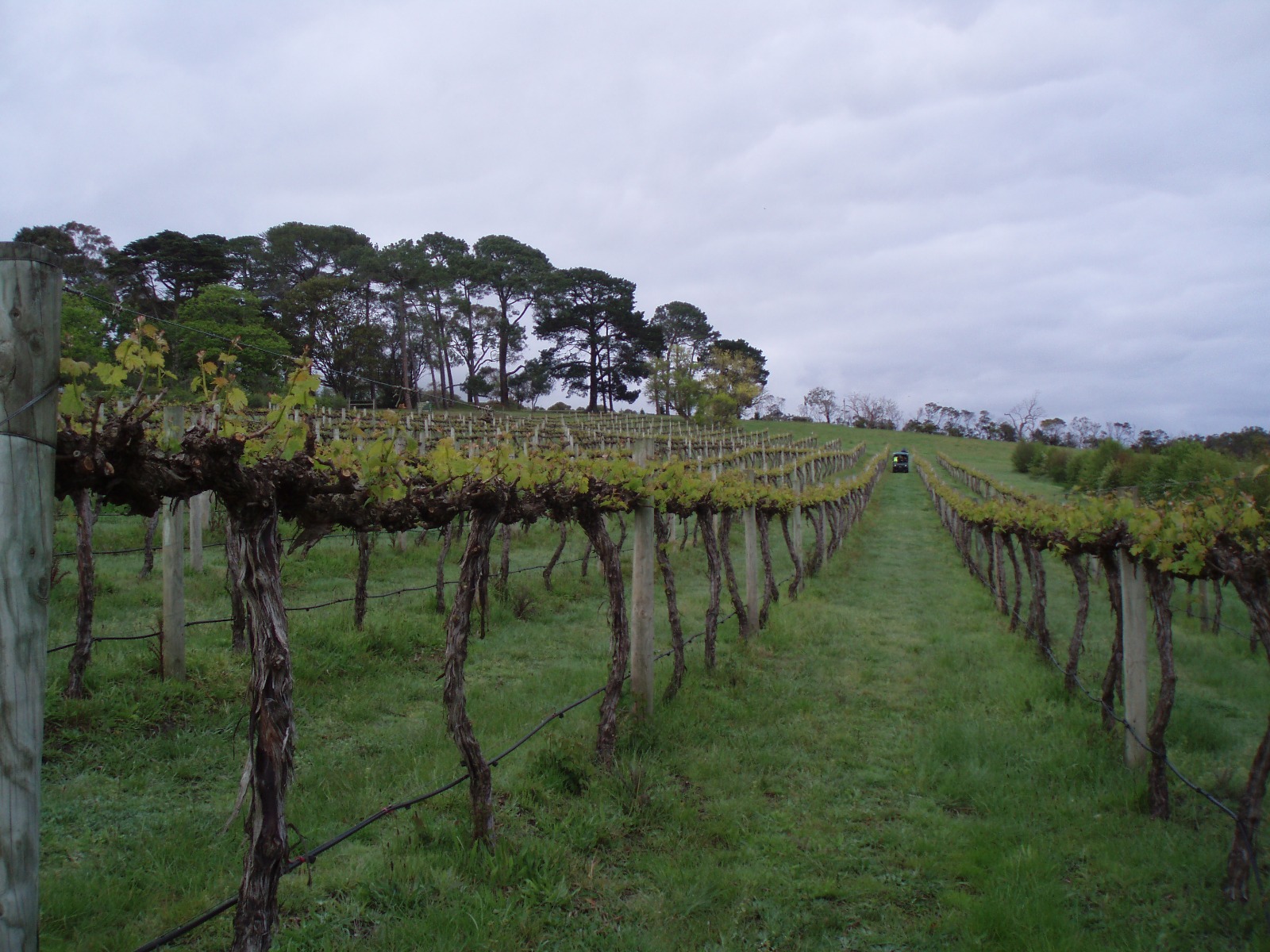
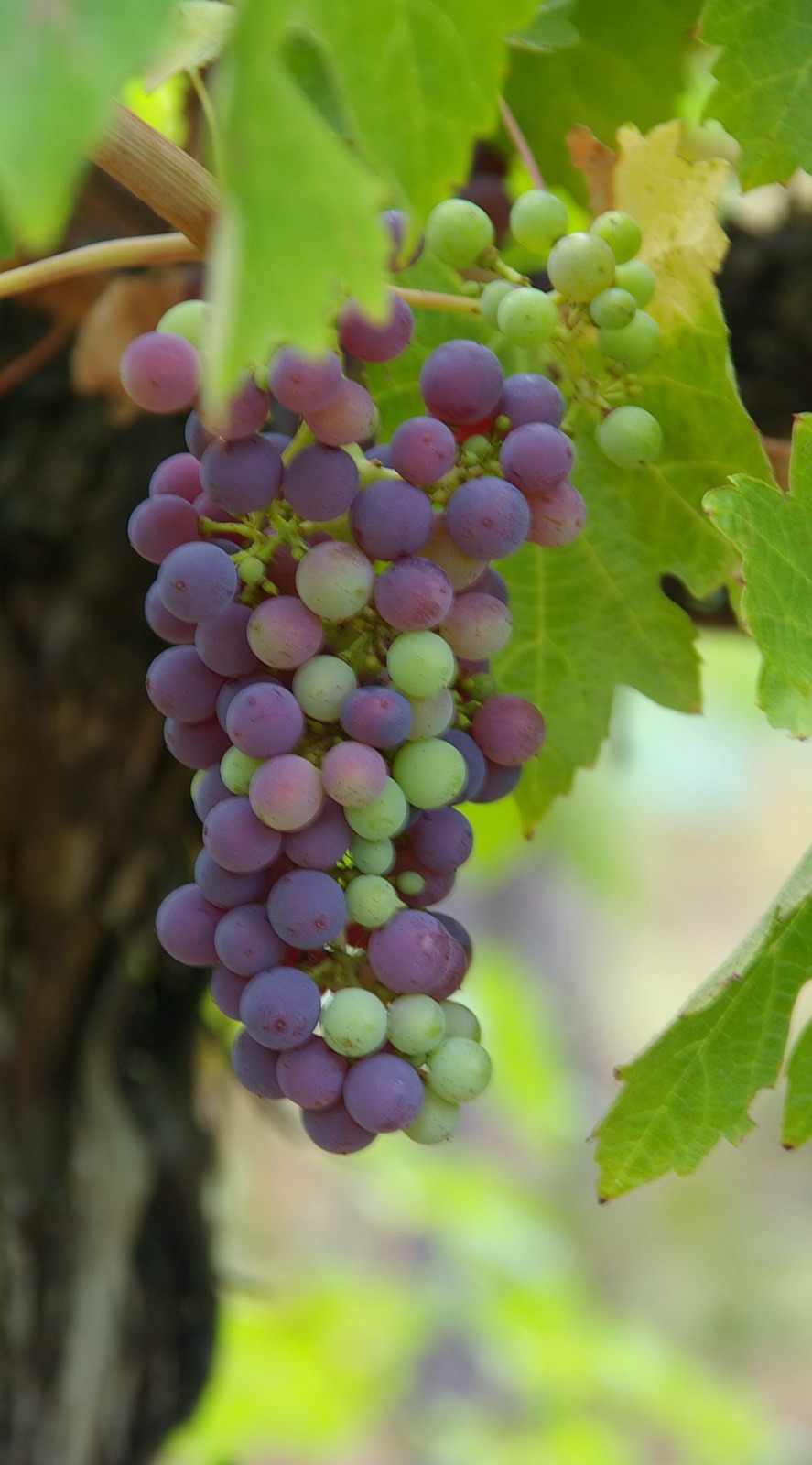
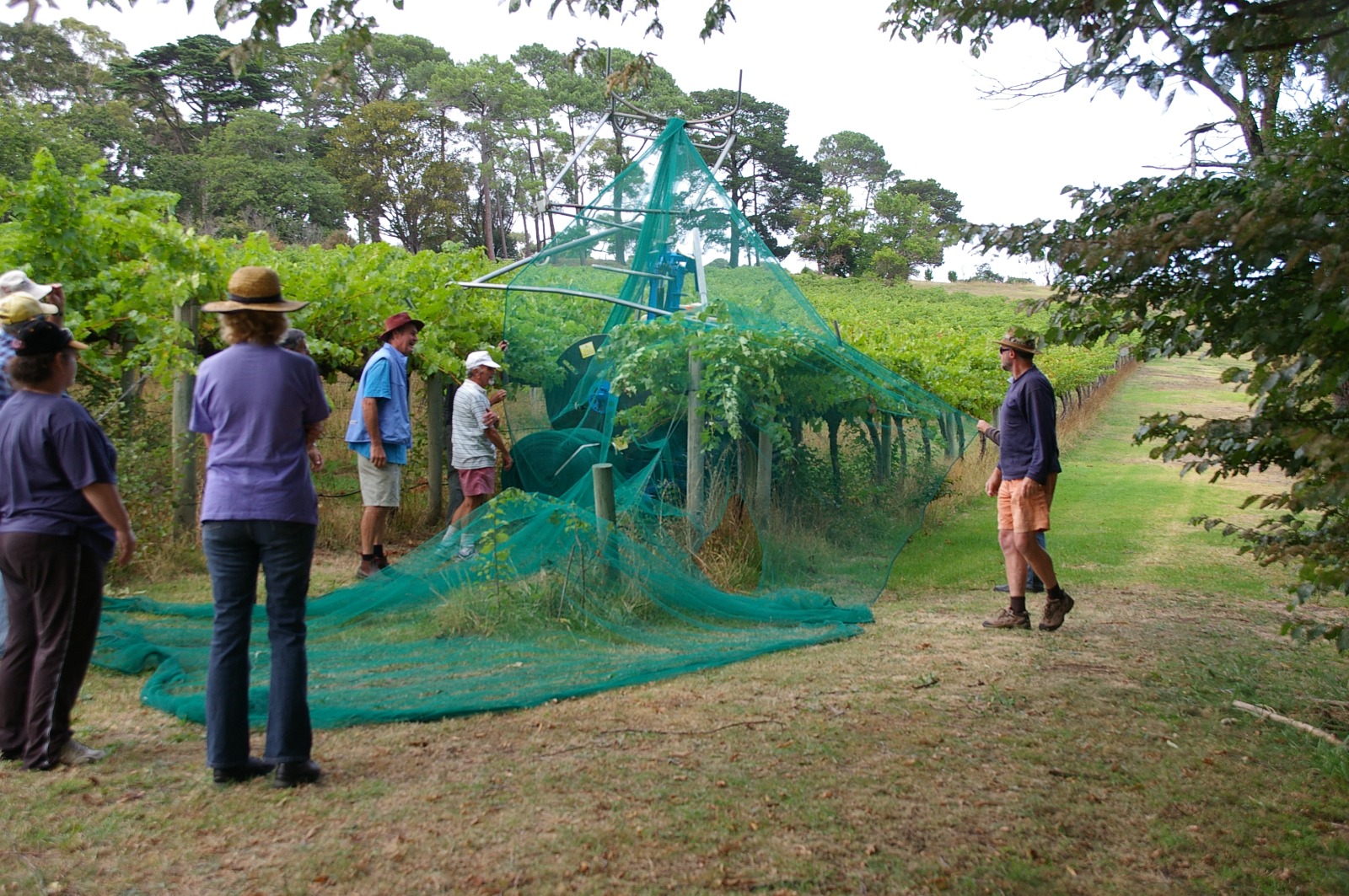
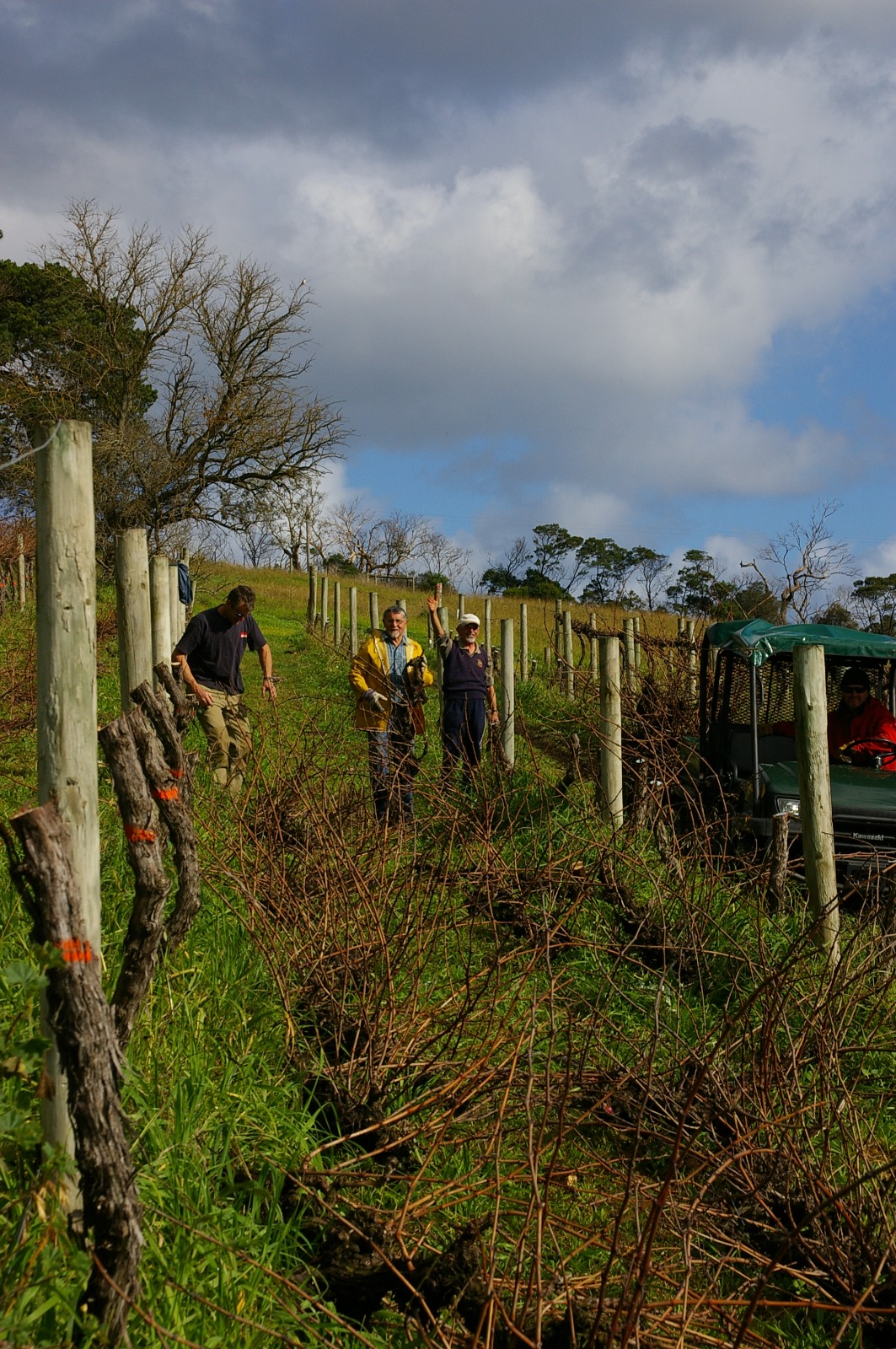
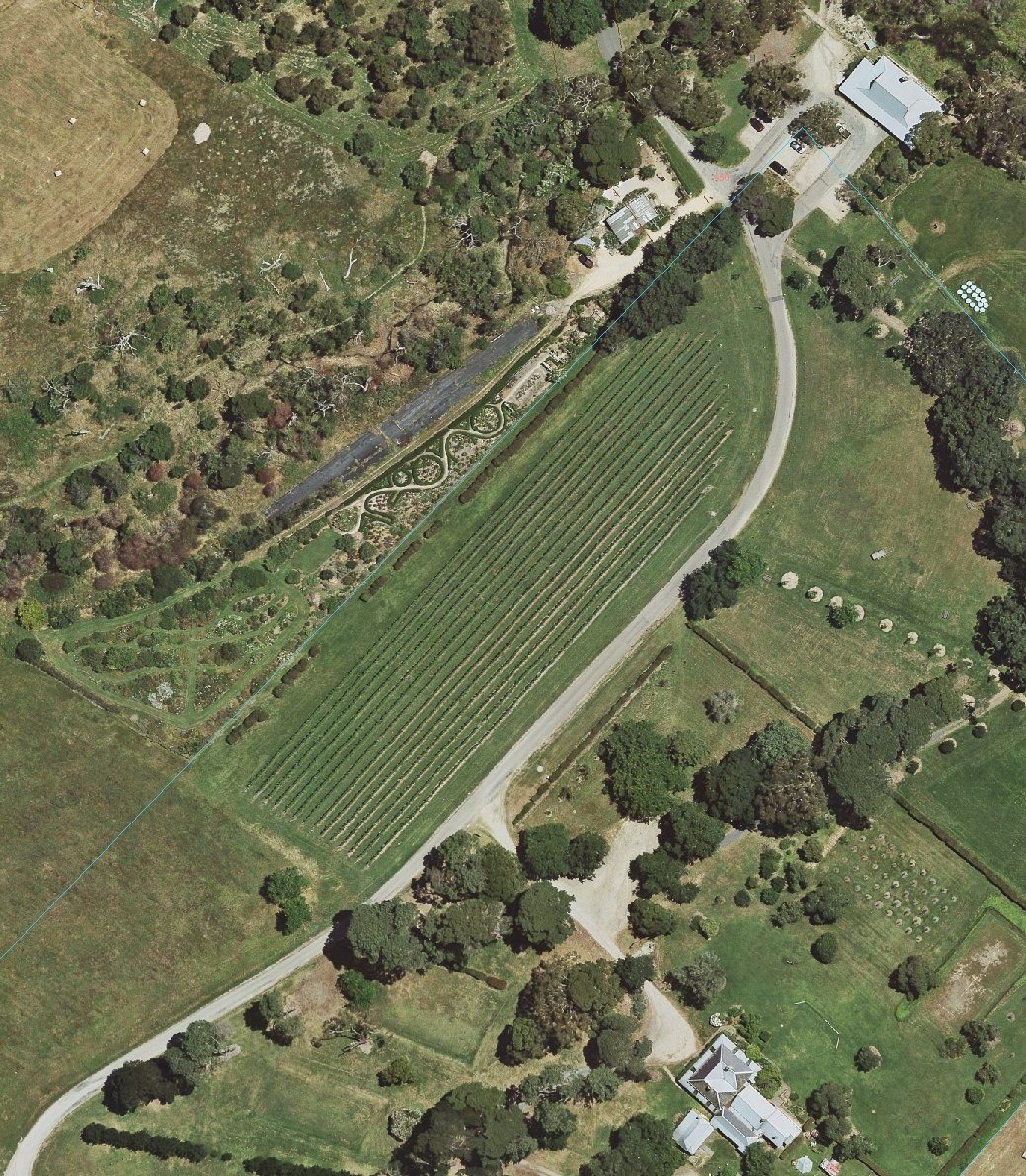
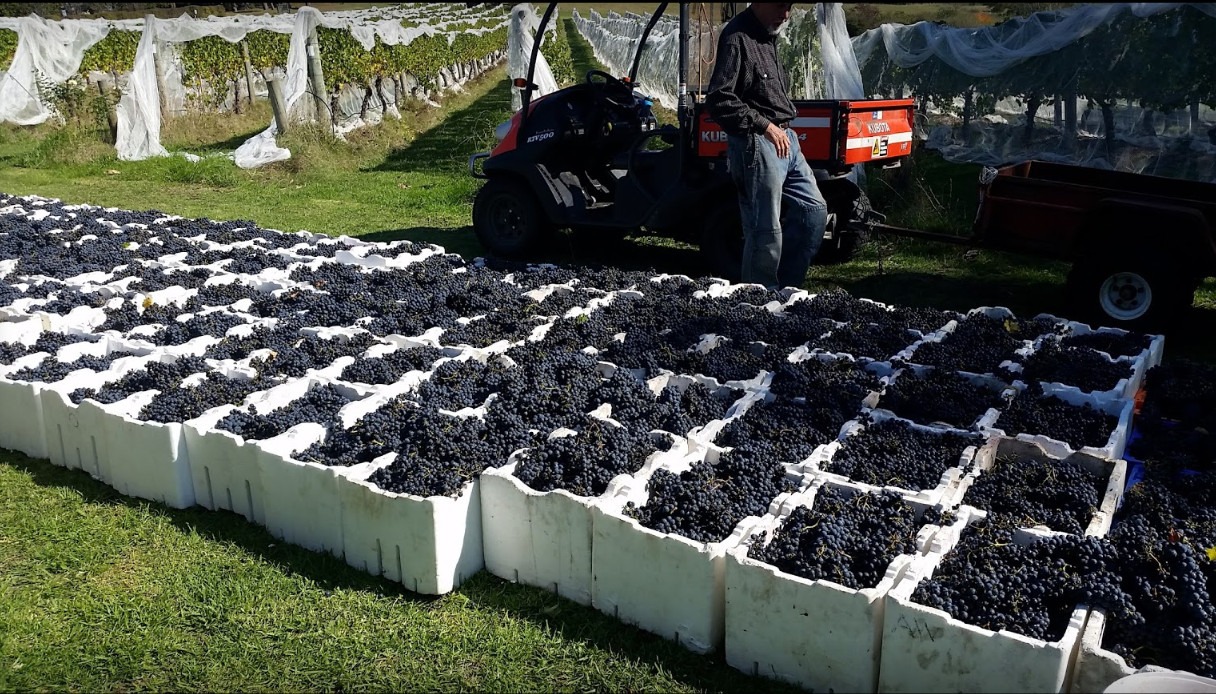
_resize-ajs5pj.jpg)
